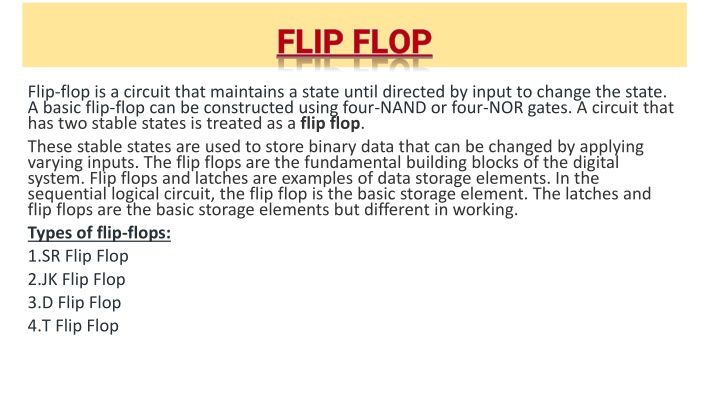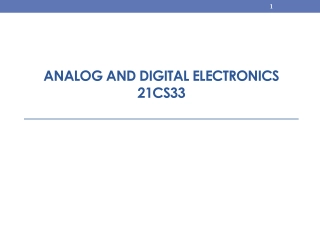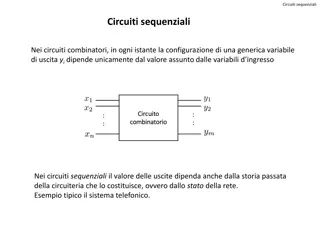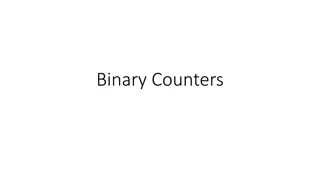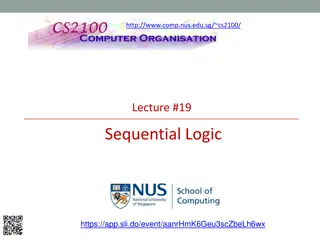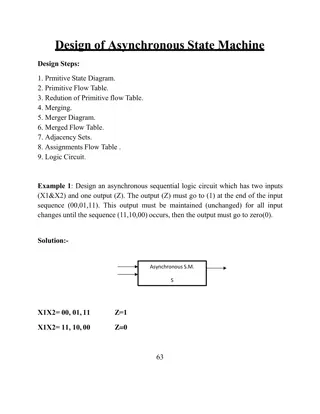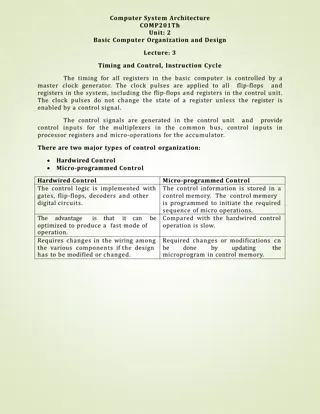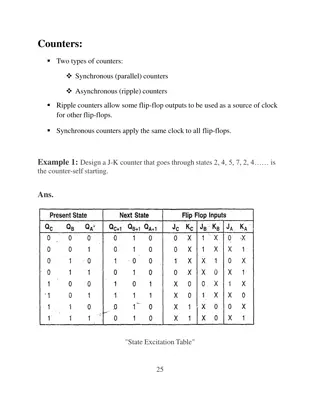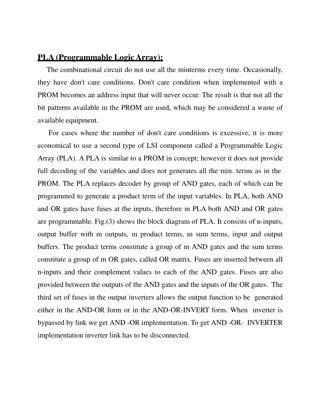Introduction to Flip-Flops in Digital Systems
A flip-flop is a crucial circuit in digital systems that maintains states until directed by inputs to change the state. Learn about different types of flip-flops like S-R, J-K, D, and T flip-flops, their functions, and applications in digital circuits. Explore how flip-flops are used as storage elements to store binary data and understand their role as fundamental building blocks in sequential logic circuits.
Download Presentation

Please find below an Image/Link to download the presentation.
The content on the website is provided AS IS for your information and personal use only. It may not be sold, licensed, or shared on other websites without obtaining consent from the author.If you encounter any issues during the download, it is possible that the publisher has removed the file from their server.
You are allowed to download the files provided on this website for personal or commercial use, subject to the condition that they are used lawfully. All files are the property of their respective owners.
The content on the website is provided AS IS for your information and personal use only. It may not be sold, licensed, or shared on other websites without obtaining consent from the author.
E N D
Presentation Transcript
FLIP FLOP Flip-flop is a circuit that maintains a state until directed by input to change the state. A basic flip-flop can be constructed using four-NAND or four-NOR gates. A circuit that has two stable states is treated as a flip flop. These stable states are used to store binary data that can be changed by applying varying inputs. The flip flops are the fundamental building blocks of the digital system. Flip flops and latches are examples of data storage elements. In the sequential logical circuit, the flip flop is the basic storage element. The latches and flip flops are the basic storage elements but different in working. Types of flip-flops: 1.SR Flip Flop 2.JK Flip Flop 3.D Flip Flop 4.T Flip Flop
S-R FLIP FLOP The S-R flip flop is the most common flip flop used in the digital system. In SR flip flop, when the set input "S" is true, the output Y will be high, and Y' will be low. It is required that the wiring of the circuit is maintained when the outputs are established. We maintain the wiring until set or reset input goes high, or power is shutdown. The S-R flip flop is the simplest and easiest circuit to understand.
J-K FLIP FLOP The JK flip flop is used to remove the drawback of the S-R flip flop, i.e., undefined states. The JK flip flop is formed by doing modification in the SR flip flop. The S-R flip flop is improved in order to construct the J-K flip flop. When S and R input is set to true, the SR flip flop gives an inaccurate result. But in the case of JK flip flop, it gives the correct output.
In J-K flip flop, if both of its inputs are different, the value of J at the next clock edge is taken by the output Y. If both of its input is low, then no change occurs, and if high at the clock edge, then from one state to the other, the output will be toggled. The JK Flip Flop is a Set or Reset Flip flop in the digital system. Truth Table:
D FLIP FLOP D flip flop is a widely used flip flop in digital systems. The D flip flop is mostly used in shift-registers, counters, and input synchronization.
T FLIP FLOP Just like JK flip-flop, T flip flop is used. Unlike JK flip flop, in T flip flop, there is only single input with the clock input. The T flip flop is constructed by connecting both of the inputs of JK flip flop together as a single input. The T flip flop is also known as Toggle flip-flop. These T flip-flops are able to find the complement of its state.
